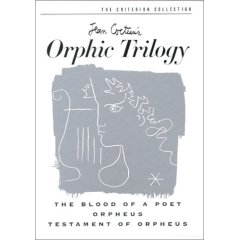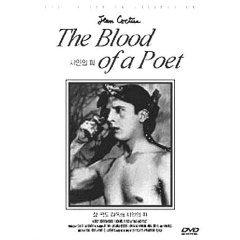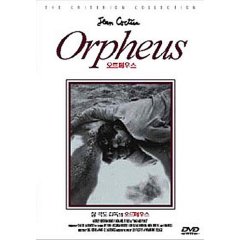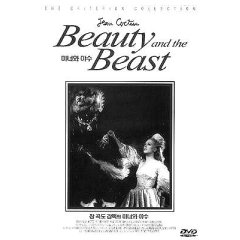 A
Study of Death and Beauty, June 18, 2005 A
Study of Death and Beauty, June 18, 2005
"Sun Under the Rain" is the first short film in this
"movie." As rain cascades onto a slate gray house, a
young boy is told he must stay home. Soon his curiosity compels
him to wander in the forest. The sunlight filters through mist
weaving its way through the giant trees in layers of enchanting
vertical art. At times the rain appears like glitter against the
wet rust bark. There is a sense of mystery as the young boy
hides behind a tree and watches a fantastical wedding
procession. Upon returning home he is told he must face his fear
and ask forgiveness (or die) for watching the fox's wedding
procession. We are then rewarded with fields of flowers and a
rainbow.
This is the first in a series of eight short dreams that seem to
be dealing with various elements of death. In the first movie,
there is a choice between death or asking forgiveness. This
introduces the idea of death and in the next short film about a
peach orchard, the idea is taken one step further. The peach
orchard is cut down and this introduces the idea of death in
nature. Tree spirits discuss their tragic end with the child and
dance in four magical rows where the trees were planted. As a
child cries over the loss of the peach blossoms he says:
"Peaches can be bought. But where can you buy a whole
orchard of blossoms?" The first two films contain magical
elements to surprise and delight the inner child.
The Blizzard and Avalanche will try your patience at first, but
as with many of the films, your patience is well rewarded. Just
as we are losing hope, a snow goddess arrives and seems to be an
angel of death lulling a climber into sleep, as if to calmly
steal his soul while the wind whips her hair in an erotic dance
of nature. As he lays covered in snow, she places layers of what
appears to be a magical shawl over his shoulders. She keeps
saying things like: "The ice is hot." I kept thinking
this was a study in hope and yet the elements of death were very
present. Expect the unexpected in this section.
The Tunnel brings us to the concept of fearing the unknown or
not accepting our death. The walking dead appear and there is a
sense of having lived an unfulfilled life or dying for causes
that were not worth more than life itself. This is when Akira
Kurosawa starts to delve into political aspects and death's
stark reality in war. Another film shows the dangers of nuclear
power and Mt Fuji glows with a ruby shimmer and seems to be
melting. The images of the demons in pain gave me nightmares the
night after I watched this movie. The images of blood-red lakes
and demons, in what seems like emotional and physical agony, was
enough to make me dream about hell. In fact the night after I
viewed these short films, I had many "short film
dreams" of my own.
One of my favorite sections is "Crows," where an
artist steps into a Van Gogh painting. The film has many
surprises, but very little plot. Mostly we are viewing two
painters walking through their own art and discussing their view
of the world. Crows is much more about visual delight and a
surprising ending.
"The Village of the Watermills," takes place in a
picturesque village complete with a dreamy river and little
bridges. Here death is celebrated and life is revered. The water
rushes over long flowing underwater grass growing from the
riverbed. We are faced with questions about our modern reality.
Is it as comforting as living in a village? Is our modern
village somewhat lacking in community? Do our funerals focus too
much on our sorrow and less on the celebration of a life well
lived?
I watched this twice and noticed quite a few new elements on the
second viewing.
I want to go sit by the river in the Watermill village and watch
the long grass weave back and forth in the water and the child
in me wants to be walking in the front of the funeral
procession, tossing flower petals in front of the dancers.
~TheRebeccaReview.com

Vincent: The Life and Death of Vincent Van Gogh
 In his own words..., November 10, 2005
In his own words..., November 10, 2005
"I will not live without love." ~Vincent van Gogh
The story of Vincent van Gogh's life seems best told in his own
words, complete with casual sketches, detailed drawings and
famous paintings. In the spirit of "Crows" in Akira
Kurosawa's Dreams (where we see the Langlois Bridge and Crows in
the Wheatfields brought to life), we are entertained by visions
of painting after painting. It is fun to watch Akira Kurosawa's
Dreams after viewing this movie because then you recognize the
paintings that were brought to life in a dream of pure visual
delight.
The Café Terrace, Yellow House, Fishing Boats, Bedroom at
Arles, Starry Night and Sunflowers are some of the paintings
featured, but there is an entire world of Vincent van Gogh's art
that is introduced with analytical letters written to his
brother. In these letters he tells his brother of the art he is
working on and his motivating influences all while we the viewer
are entertained with the art, scenes from nature and the acting
out of various scenes (Night Café with Pool Table) that
eventually became paintings. There are fields of olive trees
from Olive Trees 1889 and Vincent's letter speaks of the
difficulty of capturing the colors in the soil and tree bark.
When you hear the story of Vincent van Gogh's life in his own
words, suddenly he becomes so much more than a famous artist.
His life is filled with tragedy and hardship, but he is also
able to find stunning beauty through his love of philosophy and
his view of the world seems to remain relatively positive right
up until his death. He not only travels, he also lives with
Gauguin. The art shown after living with Gauguin shows how being
able to relate to someone like himself increased his creativity.
He speaks of how he is a self-taught artist and how thankful he
is that he was not trained and therefore had to experiment with
paint to produce eye-catching effects. As he travels, his world
expands and so does his art. He tries to capture his experience
in 1,800 works during his life and while they can't all be shown
in this movie, the director tries to capture as many beautiful
scenes and pieces of art as he can in as many ways film allows.
The creativity is delightful as actors take their places and
then a picture emerges.
"How lovely yellow is." ~Vincent van Gogh
He seems far from debilitating madness in his letters (he talks
about episodes) and more inclined towards deep contemplations
and philosophical discussions. He seems to be reaching out to a
world that does not quite understand him all while trying to
make the lives of those around him less lonely.
The movie begins with his lofty spiritual goals and ends with
his death. We learn so much about this artist, of his being
homesick for the land of pictures and how he felt compelled to
capture the daily activities of the peasants.
The goodness in his heart truly shines through the darkness of
his later days as he helps a woman most would have shunned and
must live without the love of the woman he wanted to marry.
Through a weaving of philosophy and art, Paul Cox created a
stunning and somewhat mesmerizing journey through the life of
Vincent van Gogh (1853-1890). I watched both the movie and the
interview three times because the thoughts and experiences are
so compelling. Of all the movies I've seen on an artist's life,
this is my favorite. What makes this truly memorable are the
letters from Vincent to Theo read eloquently by John Hurt.
After watching this, you may find yourself looking for a book
about Vincent van Gogh's art or his letters in order to find
some of the art shown in this movie or to expand your knowledge
of his writing and philosophy. While many emphasize the madness,
this movie emphasizes the struggle for beauty and the unending
desire of the artist to capture all that he loves.
~TheRebeccaReview.com
Jean Cocteau's Orphic Trilogy - Classic Filmmaking

The Orphic Trilogy
The Blood of a Poet - 1st Film

The Blood of a Poet
 Realistic Dream Worlds, October 10, 2006
Realistic Dream Worlds, October 10, 2006
"a descent into oneself, a way of using the mechanism of the
dream without sleeping, a crooked candle, often mysteriously blown
out, carried about in the night of the human body." ~ Jean
Cocteau
Blood of a Poet is surprisingly captivating and encourages the
viewer to remain completely attentive by capturing surprise in every
moment. Who would think a ball of snow would destroy a human life or
that a mouth could transfer from a painting onto a hand like a
sensual stigmata.
As a man struggles to comprehend his newly found
"life-giving" force, he kisses a statue into life and then
becomes a voyeur in a world of bizarre occurrences after splashing
through a mirror, a scene that made me laugh with surprise. Here,
decorative angels climb down off walls, walk across ceilings and
housekeepers sigh in frustration.
The violent scenes are more like scenes from a dream and in
black-and-white, the effect is rather mild and the suicide seems to
be unsuccessful. The idea is more about the artistic look of the
black blood than the actual death of the individuals. It is very
experimental in nature and more art than death.
Recently while watching a set of music videos directed by Anton
Corbijn, I did notice a direct correlation between this movie and a
1984 music video where a hand (complete with faces instead of just
lips) follows a woman and people try to step through mirrors. It
could have just as easily been inspired by Alice in Wonderland, but
I have my sneaking suspicion "Blood of a Poet" has
inspired more than a few music videos.
The beginning of this movie seems to stay in your mind for a few
days as you consider the meanings and symbolism. Due to the
realistic portrayals (sets are all fairly uncomplicated), this is
surreal, but in a very down-to-earth way.
~The Rebecca Review
Orpheus - 2nd Film

Orpheus
 An Ephemeral Vision of Life and Death, October 12, 2006
An Ephemeral Vision of Life and Death, October 12, 2006
Orpheus is the second film in the Orphic Trilogy by Jean Cocteau and
after watching "The Blood of a Poet" it makes much more
sense. You are thrown into a similar world, and if you embrace the
magical realism that is somewhat haunting, it becomes quite a
delicious story with a purpose.
Based on the Greek myth of Orpheus, the main couple, Orpheus the
poet and his wife the somewhat fragile Eurydice (killed by a
motorbike instead of a snake), experience life in a world where they
are presented with otherworldly temptations and serious
life-changing contemplations.
They visit a strangely modern underworld where Orpheus seems to be
looking for death/the Princess or perhaps Persephone (queen of the
underworld - but she seems to be more like the temptress/siren in
this movie) more than his recently departed wife. She seems to have
a good sense of humor and reminds the participants of her plots not
to look back lest they be turned into pillars of salt, as she
remembers from the past.
There are all sorts of lovely visual metaphors like "kiss of
death" and other ideas you pick up on as you are watching the
story unfold. Just as in "The Blood of a Poet," we find
humans moving through mirrors as easily as their underworld
conspirators. Death falls in love with a poet, although we assume he
fell in love with the idea of her first. In a way, he writes her
into his life.
Everyone seems to live in reality all while moving from death to
life and from life to death. Keeping up with who is dead and who is
alive only makes it all the more fun. It is not quite as frightening
as a horror movie, but somewhat like a twilight zone with an
unexpected ending. I found this to be rather intriguing and it kept
my attention better than most modern movies of today. There is
something very elegant, contemplative and intriguing about the
movies in Jean Cocteau's trilogy. I love the way the mirrors turn
watery and how the characters move so easily from one world to the
next.
~The Rebecca Review
Testament of Orpheus - 3rd Film

Testament of Orpheus
 The Third Movie in the Orphic Trilogy, October 17, 2006
The Third Movie in the Orphic Trilogy, October 17, 2006
"The danger with films is that we get used to seeing them
without paying the same attention we would pay to a play or a book.
But it is a first-class vehicle of ideas and of poetry that can take
the viewer into realms that previously only sleep and dreams had led
him to." ~Jean Cocteau (1889-1963)
Jean Cocteau's third film in the Orphic Trilogy is not quite as
structured as the first two movies, but still contains intriguing
elements of filmmaking from the past. His fixation with gloves and
ghostly apparitions remains consistent, as does his love for special
effects and mythical elements.
While the first two movies seemed to focus mainly on serious topics
and darker elements, this movie has quite a few laughs and witty
comments like: "I have a poor memory for the future." It
makes sense within the context as this movie contains time travel.
Jean Cocteau wanders through his own movie making comments about his
last two movies and putting his paintings on display.
Jean Cocteau's Orphic Trilogy is a testament to art and his
influence can be seen in the works of modern filmmakers and even in
music videos. While you are sure to have a favorite scene from every
movie, or more, this one contains a great scene where the poet comes
back to life and is said to have only pretended to die. Jean
Cocteau's inner magical child is playful and spontaneous and you
can't help but love his movies.
~The Rebecca Review

Beauty and the Beast
 Sumptuous Perfection, November 14, 2006
Sumptuous Perfection, November 14, 2006
Sheer curtains shimmer in hallways where characters float as if in a
mist of dreams, appearing from velvety darkness. The sumptuous
perfection of the black & white cinematography is a beauty even
beyond the story, which is emotionally fulfilling and replete with
contrasts of ethical significance. As with any great story, there
are forces of darkness and light, a hero's journey and exciting
moments of terror where the characters must overcome their deepest
fears.
Both Belle and her father must overcome their fears in the dark
forest where a magical castle is securely hidden amidst thick
foliage. Here the Beast wanders in his anguish, knowing he can only
escape his torment with a loving look. The possibility of this
happening (of human kindness appearing in the dark treacherous life
he leads) is so challenging a prospect; he almost seems to lose his
mind in his impatience.
The sheer terror Belle experiences when she first sees the Beast, is
subtlety softened by his carrying her up a winding set of stairs
into a beautiful garden setting. The change of her costume in one
scene creates magical elements as Jean Cocteau works his cinematic
magic born of his fascination with mirrors, animated statues and the
ability to escape time's constraints. Arms stretch out from walls
holding candelabra and hands pour drinks from the middle of a table.
As with all of Jean Cocteau's work, you can see his influence
appearing again and again throughout the history of cinema. Even
Disney seems to have captured the magic from this movie and if you
have an interest in the story of Beauty and the Beast, then Jean
Cocteau's La Belle et la Bête is an essential experience. I can
also highly recommend his Orphic Trilogy.
The Commentary versions are well-worth watching and you can end up
spending the entire evening watching this three times and enjoying
every moment. I will have to agree that even Belle seems to be
disappointed by the appearance of the prince who seems too perfect
and so much less of a challenge.
There is great beauty in the love Belle shows to the tortured soul
of the Beast and in this is the true beauty of kindness. You can
completely lose yourself in the magical perfection of this timeless
classic.
~The Rebecca Review
A Doll's Dream
|